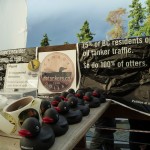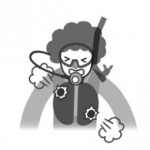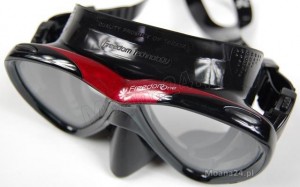Although it’s been about 5 years since I left the non-profit world for a life of scuba diving, tourism, and boating, I’m still drawn to the work that’s being done by passionate and compassionate people around the world. From harnessing the power of impoverished girls (The Mariposa Foundation) and empowering displaced Haitian migrant workers (Kiters4Communities) in the Dominican Republic to a worldwide charity and donor connecting service (ServicesInAction) based in Toronto, I always seek out opportunities to stay involved and witness the change we can make! Here on the west coast, I have discovered The Dogwood Initiative.
I arrived in Victoria, BC on Vancouver Island in May of this year just for a nice visit with some friends who live here and what I discovered continues to impress me ! I encountered friendly, laidback people all who are deeply in love with the ocean that surrounds them, not to mention a welcoming and active scuba diving community. These are all things one would expect from individuals living an island life!
After deciding to stay and getting a summer job at The Brentwood Bay Resort Marina and helping out with Rockfish Divers, I learned about a fascinating non-profit organization called The Dogwood Initiative. Over the years, I have been witness to (and employed by) a wide variety of non-profits some of which have included, Habitat for Humanity, Multicultural Council, YMCA, Canadian Centre for Victims of Torture, Crosscultural Services, ACCES Employment, Council for the Access to Professional Engineering, and Kiteboarding 4 Girls. These organizations are on meaningful and significant missions to help, protect, educate and to simply do more. With objectives and deliverables being met to serve the greater good as a whole or just one person at a time, all of them are making a difference in this world through the lives they touch and to society as a whole.
However, The Dogwood Initiative stands out from the crowd for me. They are driven to:
-Provide real remedies rather than band-aid solutions
-Work towards systemic change to broad issues through realistic and meaningful channels
-Use collaboration and inclusion among key players
Let me use information from their website to provide more details about their philosophy:
“Wherever you go in the world, private interests are taking over public resources, such as air, land and water. In British Columbia, Dogwood Initiative is pioneering a model to put control back in the hands of the public by bringing together citizens and First Nations to reclaim decision-making power over their natural resources”
“Right now, 96 per cent of British Columbia’s land is owned by the people, but 88 per cent of that land is controlled by large timber, mining and oil companies”
The Dogwood Initiative has two important campaigns that they are focusing their energies on right now. One in particular, The No Tankers campaign, will truly affect the underwater livelihood that is so majestic on this side of the planet
The No Tankers campaign is seeking to prevent the most powerful oil companies from pushing more crude oil tankers to BC’s coast. More tankers would seriously jeopardize the livelihoods of tens of thousands of British Columbians as well as the stability of the Great Bear Rainforest and south Gulf Island ecosystems all in the name of profit. The Dogwood Initiative seeks to collaborate with British Columbians and the First Nations here, the private sector, and the public sector to make decisions that are in the best interest of this province and land. So far,
- 100+ First Nations have banned oil pipelines or tankers using their own laws.
-146 609 People support their campaign against the expansion of crude oil tanker traffic.
-410 Businesses have signed their petition against the expansion of crude oil tanker traffic.
And how about you? Would you like to have your say?
On December 1st, 2013 Rockfish Divers hosted their 1 year anniversary of owning this lovely dive business on Vancouver Island. Not only was it a super fun day of scuba diving with a marina clean-up, there was also an online auction with some pretty cool items to bid on with all proceeds going towards The Dogwood Initiative.
Take a look at the auction items here.
If you have any questions or want to get involved, just drop me a line!
Take a look at some of the photos from the event on the DiveWithMia Facebook page!








